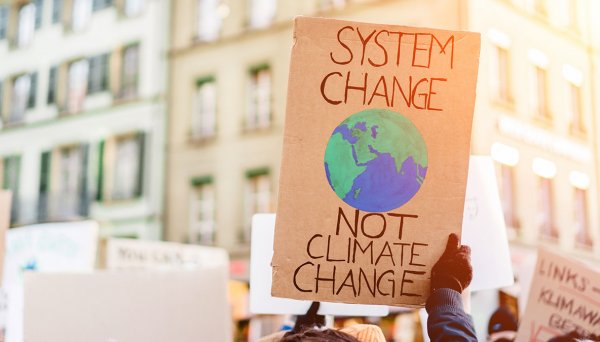We’ve all become more conscious of our own impact on the world and how we can care for our planet better, tackling the negative effects of climate change as part of many people’s everyday lives. Combatting climate change is no longer simply a question on government agendas, and people of all ages from all walks of life have become more proactive in their attitudes towards the environmental crisis which is unfolding.
Our children have the biggest task ahead, and we all have a responsibility to outline and inform the problem and set out a plan to tackle it — whether you are a corporation, a parent or a teacher, everyone has a duty to share the narrative and explore new solutions. Let’s take a look at how businesses, classrooms and social media activists are amplifying this extremely important message.
The duty of schools to influence change through curriculums
A survey carried out by Yougov has revealed that many teachers feel ‘ill-equipped’ when it comes to delivering lessons on climate change. In fact, prioritising climate change education is an issue supported by over 69% of those included in the survey and calls to add it to the school curriculum in the UK are only growing. In June 2019, Labour announced its pledge to make the climate emergency an inherent part of the national curriculum in primary schools and onwards. While climate change is currently taught in key stage 3 (age 11-14) and key stage four (age 14-16), many key activists and leaders have stressed that this isn’t enough.
Waves of strikes have hit schools as a result, triggered initially by the social media activist Greta Thunberg, after she skipped lessons to hold a solo protest outside the Swedish parliament in Stockholm. Children of school age on every continent have organised themselves and led a call to action, and education methods are changing as a result.
EduCCate Global have generated a training plan to be put in place for teachers, and more than 600 teachers have signed up to the module-based program through which they receive UN accreditation as a ‘climate change teacher’. This is an extremely positive step towards building a strong system of education which tackles the biggest issues surrounding climate change.
The Greta Effect
As mentioned, there’s a growing platform for young activists on social media. These youngsters are equipped and ready to spread awareness surrounding our ecological crisis. Greta Thunberg has become a prolific figure for tackling climate change, addressing the topic with a no-nonsense, factual based approach.
Thunberg inspired school strikes after she skipped lessons to hold a solo protest outside the Swedish parliament in Stockholm. This had a domino effect across the globe — Greenpeace have even curated a worldwide map of strike locations. Most are held every Friday, known as ‘Fridays for Future’. Children of school age on every continent have organised themselves and led a call to action, and education methods are changing as a result.
The #FridaysForFuture movement has sparked a global following, and the aftermath of her appearance at the 2018 United Nations Climate Change Conference triggered two coordinated events in March 2019. These events saw more than 1.6 million people from 133 countries become active demonstrators. Greta has taken her campaign to grace covers of some of the biggest publications around the world, from Teen Vogue to TIME. She told the latter: “Young people who are in developing countries are sacrificing their education in order to protest against the destruction of their future and world”. Young people are certainly listening to Greta as a voice of their generation.
Greta shuns politicians for their ineptness in properly addressing the seriousness of climate change, saying “I realised that no one is doing anything to prevent this from happening so then I have to do something “. From sailing across the Atlantic on a zero-carbon yacht, to helping all of her own family give up meat, Greta is certainly leading the way towards a greener future.
More conscious attitudes in and outside the home environment
Climate change can be tackled in some surprising ways, and by being conscious in our homes and beyond we can teach and inspire young people to do the same.
Greener living habits
Even from within our own homes we can nurture good habits into our children and teach some good, green habits. 43.2% of households recycled their waste in 2018, but this figure needs to reach 50% by 2020 in order to comply with the EU target. Teaching kids to recycle can be fun, and you can get your little ones involved by getting crafty with some DIY recycling bins. You could push them to come up with creative ways to reuse household products such as cardboard cereal boxes and milk bottles. Composting is also becoming a popular choice in many households. You don’t have to be an expert gardener to get started with some kitchen composting! From banana skins to apple cores, avocado pits and more, anything can be composted, and over time you’ll create your own nutrient rich fertilizer.
Did you know that we can also be green when it comes to shopping? While there’s a lot of uncertainty surrounding what the best eco-friendly clothes materials are, many fashion companies are striving to use more recycled materials in their garment production processes. Muddy Puddles is amongst these brands. If you’re on the look for a girls or boys waterproof jacket, the company is proud to produce some great styles using recycled fabrics. They’re perfect for dressing your mini eco-warriors in!
As parents, teachers, and companies, we’re all empowered to teach and join our youngsters in combatting climate change. There are so many innovative, simple life changes that you can make to get started.
Sources:
https://www.statista.com/statistics/444744/household-recycling-rate-uk/
https://www.theguardian.com/environment/2019/jun/21/teachers-want-climate-crisis-training-poll-shows
https://time.com/5595365/global-climate-strikes-greta-thunberg/



